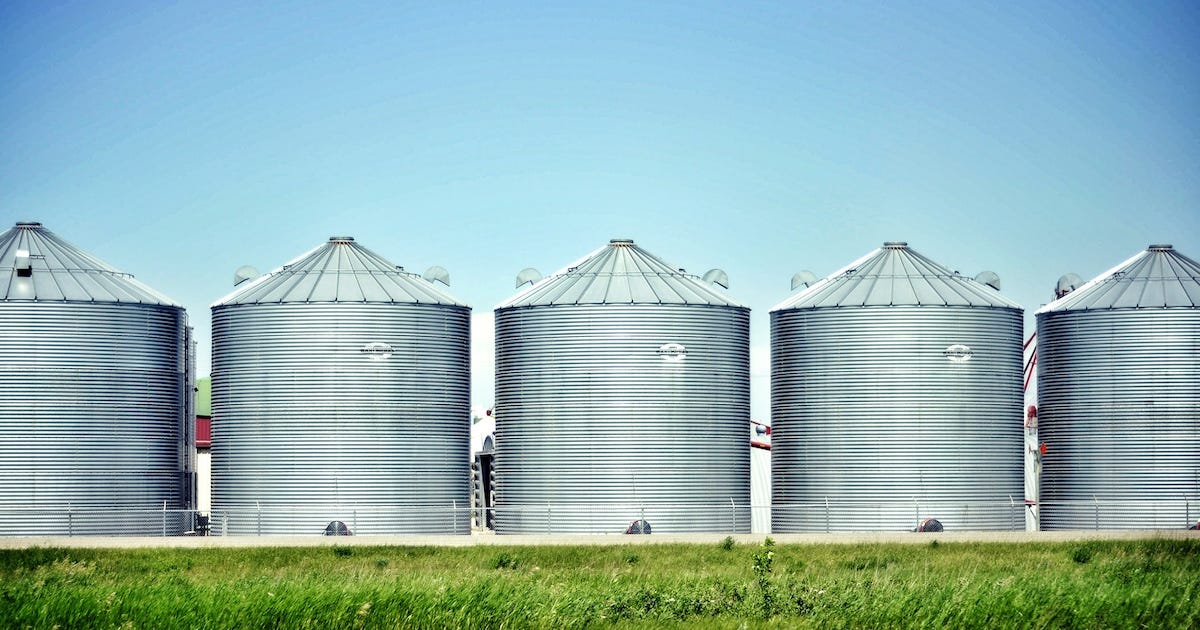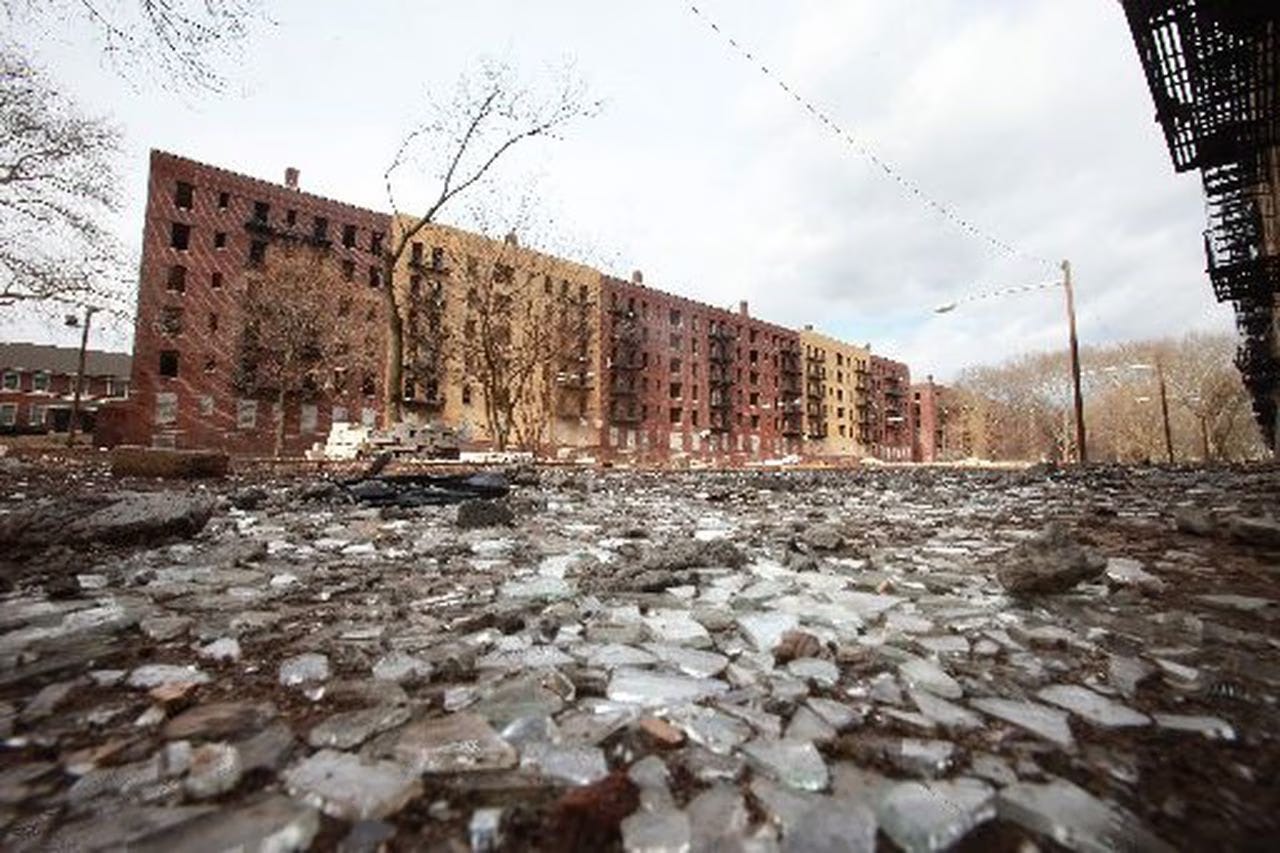A Field of Silos
EDITORS NOTE: Today's bit contains a major spoiler for the Apple TV series Silo, based on the eponymous series (also known as "Wool") by Hugh Howey. You’ve been warned.
A social media friend and fellow Substacker recently introduced me to the concept of "15 Minute Cities" in his apt analysis of the fundamental incompatibility between central planning and property rights, here. The 15 Minute City idea is one of those "oh, how nice it would be!" notions that you'd expect the young and idealistic to dream up in college dorm bull sessions (do those still happen? I wonder). It envisions a lifestyle where all the things in a person's daily routine - work, school, shopping, entertainment, health care, etc. - are within a 15 minute walk or bicycle ride of one's home.
Doesn't that sound nice? It's a stone's throw from never having to leave your house, which, sadly, would suit a lot of today’s most active Internet denizens.
It also sounds, at least to this near-sexagenarian, a whole lot like the vision that brought us the 1960s housing projects, and we know how those turned out.
A moment's further reflection makes the idea look even more sinister.
The first question we should ask is, "how?" How does such a vision get actualized?
It would start with complex, intrusive, and highly granular zoning regulations, and since we're not talking about blue-sky or blank-slate construction, there'd have to be a whole lot of disruption of existing... everything. Residences, businesses, schools, hospitals, utilities... and the roads that provide access to all of them... would require armies of Best-and-Brightest to plan everything out, and then find ways to implement those plans, top-down, all the way to telling landlords exactly the sorts of tenants they're allowed to have.
Oh, and I’m sure there’ll be lots of eminent domain. Susette Kelo could not be reached for comment.
The complexity of such an endeavor would inevitably undermine the uniqueness of different neighborhoods. Once a good-enough template has been created, the impetus to use it over and over will be irresistible. Worse, that template will have been influenced and corrupted by countless special interests and rent seekers. That's how government works, and no rational person should expect anything different, this time or ever.
Cookie-cutter neighborhoods so that people can live cookie-cutter lives. The Monkees lamented suburban conformity way back in 1967, and urban planners and other leftist types have been deriding "sprawl" for decades, but urban conformity is the dream. Pack us all into high-density housing, reduce our "footprint" on Mother Gaia, and convince us that we should embrace living locally.
The accommodation for large-footprint enterprises, from big-box stores to manufacturing, warehousing, and distribution in this concept elicited recollection of H. G. Wells' Eloi and Morlocks. Which then elicits a Blue-vs-Red lament, where "flyover country" is there to service the urban clusters, with the former getting no say in how the country is run, of course.
The Silo books by Hugh Howey envision a future dystopia where a mile-deep silo houses about ten thousand survivors of some past apocalypse, with everyone's life under heavy-handed control, social structures mirroring the vertical stratification of the silo's 144 levels, and expulsion from the silo (with certain death) as the ultimate punishment. Apple TV ably adapted the books (which I enjoyed and recommend), and ended Season One with the big reveal:
Boiled down to its essence, this is what our Best-and-Brightest figure should be how we live. Structured, localized, high-density lives. The liberty of movement offered by cars made "unnecessary" by the 15-minute concept. Mass transit (oh, how urban planners love rail) to move us when we need to stray outside our 15-minute zones.
Oh, and no real liberty.
Ain't no room for that in the silos.
Is this an exaggeration of urban planners’ desires? Indeed, but the fundamental is not: people are to be managed, not left free to pursue their individual happinesses. Human spaces, likewise, are to be designed, managed, and constrained, and the ‘chaos’ and creativity of free markets and free interaction are problems to be quashed in favor of the vision of a relative few.





Who can resist a Monkee's reference? I live in the heart of urban Atlanta and the explosion of multi-use high rises has taken over the city. I moved into a renovated warehouse loft a decade ago in a neighborhood with a 5 story height limit. That limit has long since been bought out and 12+ story building are springing up all around me, all on two lane roads that are destined for standstill traffic. The planners take for granted that the residents will live AND work in the same neighborhood, which rarely happens. Our rail transit goes north-south and east-west on single routes so if you're not working off one of those routes you have to catch a bus. Can't take rail to the Braves stadium.
A few years ago the City decided to create a street railcar that went from nowhere to nowhere. Nobody rides it except for homeless people who are trying to stay either warm or cool. Now there's a multi-million dollar project to expand this rail car that nobody rides to our Beltline, which is a pedestrian/bike path around the city that follows the old railroad line. Nobody will ride this as well. I live on the Beltline and it was a nice thought but has devolved into a mass conglomeration of obtuse walkers, Lance Armstrong wannabes riding 30mph, drunk scooter ridings going just as fast, and even more bizarre 4 wheel vehicles. I watch the action from my deck and see the worst of humanity all at once. And the original rule on the route was no motorized vehicles. I can't use the path on the weekend lest I risk my life of being run over. Pleasant Valley, indeed. The planners had great intentions but created a Frankenstein.
Crystal City in Arlington VA is such a place and has been for decades. Essentially a "human habitrail". it's a bunch of hotels and apartment buildings linked by tunnels and underground shopping plazas to everything you need: work, shopping, fitness, health care, entertainment and Metro rail that can take you into DC proper or to the airport or beyond. Everything within a 15-minute walk. It's certainly convenient, but I could never find myself living in that environment for more than a week or so before I'd go crazy. I can see how it would appeal to a workaholic mentality, and it would sure beat sitting in I-395 or I-66 traffic for ten hours a week. Today I couldn't even stand to live in a subdivision.